START TYPING TO SEE PRODUCTS YOU ARE LOOKING FOR.
0
Your shopping cart is empty.
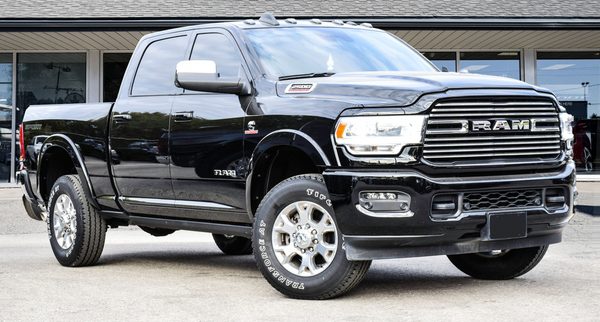
Boost leaks are a real, real problem. Charge air systems suffer leaks all the time and we want to explain why it happens, how to find it, and how to prevent them. For starters, let’s talk about how they affect the performance of your diesel truck. Common symptoms of a boost leak include increased smoke output, higher exhaust gas temperatures, excessive turbo lag, and loss of power. Before we dig into why it happens, how to find them, and how to prevent it, let’s start with the basics.
Without getting too scientific, the air pressure at sea level is roughly 14.7 pounds per square inch (PSI). With a turbocharged engine, the turbo acts like a small, high-speed fan that forces air into the engine. The amount of pressure a turbo can generate is measured in psi above atmospheric pressure. So, as a result, a turbocharged engine with 15psi of boost pressure would be moving roughly twice the air of a naturally aspirated one with twice the power.
As a result, this is why you see newer diesel engines making twice or more horsepower than naturally aspirated ones. Exhaust gases from the engine are used to spin the turbine which in turn drives the compressor via a shaft. This shared shaft spins, churning out boost pressure that is then sent to the engine.
As much as we like to stomp on that loud pedal, with enough upgrades, that additional boost pressure will find the weakest link in the system. Boost runs from the turbocharger all the way to the intake manifold and through all of the components in between.
When you add aftermarket tuning, larger injectors, and a bigger turbo, higher boost pressure is definite. Intercoolers, exhaust gas recirculation components, and even boots can develop leaks with enough boost pressure or failure to properly install these components. If a charge air system isn’t properly put together, a leak is imminent. If your truck is suffering from more than normal smoke output, higher exhaust gas temperatures, excessive turbo lag, and loss of power, you could have a leak.
The most common boost containment device is clamps and boots. These hoses can dry rot and crack over time and seep air. If you’re pulling parts on and off for whatever reason, or if you’re upgrading and some of these components need to come off, getting the parts back on correctly is critical. If you encounter a leak, not to worry. We just have to find it and fix it.
If you’ve made enough boost to burst a boot, there is no investigation, you should see it. However, the pin-sized leaks that are hard to find are what's tricky. Boost leak tests and visual inspections can reveal the problem area when under pressure. With a pressure tester, you can pressurize the entire system which will more times than not reveal the leak.
Air should be escaping and emitting a noise. The most common leaks are boots that aren’t properly installed. However, that doesn’t rule out a fractured charge air pipe, intercooler, or intake manifold gasket. Once you pressurize the system, if the air pressure gauge indicates no rise in pressure, this is the result of a major leak. If a leak is found, that is only half the battle. It is now time to fix it and fix it right.
Because all boost leaks aren’t the same, they may require a different solution. If a boot is torn, a replacement will need to be installed. When reinstalling a boot, you must make sure that it is evenly distributed between each side. If your boot is on one connection side more than the other, it won’t take much to blow it off. If a boot continues to blow off but isn’t torn, especially after being off for a repair or upgrade, something may be off. When truck owners upgrade turbochargers or charge air plumbing, the orientation isn’t always exactly the way it should be. If the system is dialed in and dead straight, it could cause the boots to continue to slip off.
A quick tip for boots and charge air pipes is to use the integrated flared end. There is a raised area on the end of intercooler pipes for a reason. One of the biggest mistakes is people get excited about their new upgrades and don’t install the clamps up against this lip. If you give your clamps a runway, with enough boost, they can almost ramp over this lip. Evenly distribute the boot across both connections and put your clamps at the base of these lips. This will result in a roadblock for our clamps to rely on. If your boots are okay but you’re still facing leakage, look into the hard parts. Intercoolers can fatigue over time and can develop leaks. This may mean you need to get a replacement. If these components all check out, check the air intake manifold gasket. These aren’t changed every time as suggested and they can (and do) blow out. This will leak horsepower and torque with ease if it isn’t properly sealed.
Now that all of our leaks are addressed, how do we make more boost? There are five sure-fire ways to help achieve more boost, horsepower, and torque. These include air intake, tuning, fuel injection, turbocharger, and exhaust upgrades.
Increasing the airflow to any engine will undoubtedly result in better performance. The factory intake manifolds can sometimes be restrictive and limit the amount of air going into the system. However, there are systems out there that are much more open and favourable for more airflow. This cool, fresh air can increase horsepower and fuel economy simultaneously.
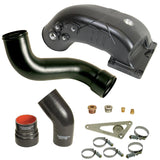
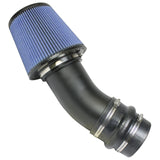
One of the easiest ways to see a performance increase is by tuning. The ECM controls the vital signs of your engine including the air-fuel mixture and maximum rpm. With a tuner, you “click & drag” your truck's fuel and air settings which offer more bang. Reprogramming your ECM is a great way to improve horsepower, torque, efficiency, and fuel economy.
A fuel injector upgrade goes hand in hand with any additional air. As one would think, it is important to have the two evenly matched. If you’ve increased the air intake, fuel injectors will certainly make a difference. A larger injector will allow more fuel to reach the engine. A good, quality injector comes with upgraded nozzles that do a good job atomizing the fuel. This all results in more boost and more power!
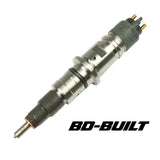

Since it IS the part that is creating the boost that we all want more of, by installing a larger one, you have the capability of making more. Matching this larger turbo appropriately with fueling and tuning is critical, but with the right recipe, a turbo is a game changer.
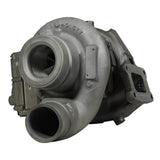


Last but not least, exhaust systems. The factory exhaust leaves a lot to be desired in terms of looks, performance, and sound. The factory exhaust systems are designed to maximize noise reduction whereas a performance exhaust is maximizing flow. A straighter, larger diameter exhaust allows more exhaust to flow freely which lowers exhaust gas temperatures and has the potential to improve horsepower, torque, and fuel economy.